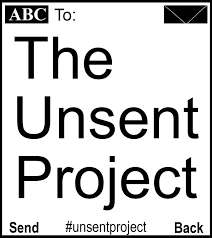Have you ever typed out a message to someone you loved—and never hit send?
You’re not alone. That very feeling sparked the birth of the Unsent Project, a digital art movement that has quietly become one of the most emotionally raw and universally relatable archives on the internet.
At its heart, the Unsent Project is a collection of anonymous, unsent messages—some loving, some angry, some heartbroken—written to a first love or someone who changed the author’s life. But beyond that, it’s a global reflection of modern emotion, digital heartbreak, and human vulnerability.
The Story Behind the Unsent Project
The Unsent Project was created in 2015 by artist Rora Blue, who wanted to explore the question: “What would you say to your first love if you could send them a text?”
Since then, the project has grown into a massive crowdsourced archive with over 5 million submissions from people around the world. Each message is posted anonymously, usually tagged with the recipient’s first name and the color the sender associates with their emotions.
Example Submission:
“I still think about you every day, even when I don’t want to. – Sarah, associated with blue.”
This color-emotion connection gives each message a visual identity, helping to paint a more intimate picture of the sender’s inner world.
Why the Unsent Project Is So Powerful
1. A Safe Space for Unspoken Feelings
We all carry words we never said. The Unsent Project gives people a chance to release those thoughts without judgment or consequence.
2. Emotion Through Color
Each message is attached to a color the writer feels best represents their emotions toward the recipient. It adds a powerful layer of expression.
3. Universal Themes
Whether it’s love, regret, longing, closure, or anger—the messages speak to experiences nearly everyone can relate to.
4. Global Participation
Submissions come from every corner of the world, across all ages and genders, showcasing just how universal and human these emotions are.
Exploring the Unsent Project: How It Works
Submitting a Message
Anyone can submit a message by visiting the official website. Submissions are:
-
Anonymous
-
Free of character limits
-
Tagged with a name and color (optional)
Searching Messages
Users can explore the database by:
-
Name (e.g., “David,” “Emily”)
-
Color (e.g., pink, black, green)
-
Emotion or keyword (e.g., “miss you,” “forgive,” “hate”)
Social Media Expansion
The project is also active on TikTok and Instagram, where selected messages are shared in video or visual form—sometimes read aloud, other times paired with music or digital art.
The Psychology Behind Unsent Messages
Sending—or not sending—a message to someone you once loved carries heavy emotional weight. Psychologists note that “unsent letters” are a therapeutic tool often used to help individuals process unresolved feelings or grief.
By participating in the Project, people:
-
Externalize emotions without confrontation
-
Find closure in being heard, even anonymously
-
Relate to others who feel the same
Is the Unsent Project a Form of Art or Therapy?
It’s both.
-
As art, it captures collective emotion and documents digital-age intimacy in an expressive, visually driven way.
-
As self-expression, it offers catharsis, validation, and emotional release.
The fact that messages are anonymous removes filters—what remains is raw, real, and often poetic.
FAQs About the Unsent Project
Is the Unsent Project still active?
Yes! As of 2025, the Unsent Project continues to accept new submissions and updates regularly across its website and social platforms.
Are the messages moderated?
Yes. While the project encourages vulnerability, it filters out hate speech, explicit content, and personal attacks.
Can I delete a message I submitted?
The site states that once submitted, messages are part of the archive. However, there is a contact form where users can request removals.
What if I find my name in a message?
Due to the generic nature of first names, messages aren’t traceable to specific individuals. Most are symbolic or metaphorical.
Conclusion: Why the Unsent Project Still Matters
The Unsent Project taps into something deeply human—our desire to speak, to be heard, and to feel understood. In a world full of carefully filtered texts and performative posts, these unsent messages are refreshingly honest and raw.
Whether you’re scrolling through the archive, submitting a confession of your own, or simply feeling seen in someone else’s words, the Unsent Project is a gentle reminder that you are not alone—and your unspoken words still matter.




